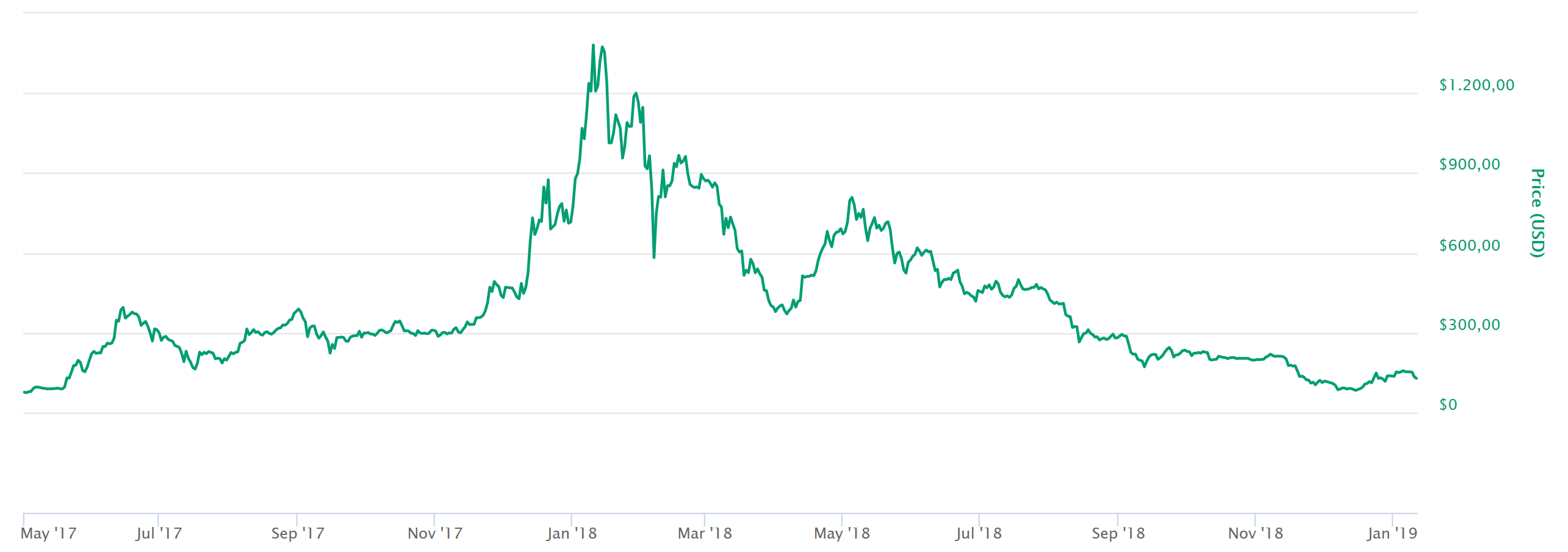Last GoDataDriven, Friday we turned off our Ethereum miner. It had been running for roughly 1,5 years and made us 2.04 ETH ~ 220 euros. In this blog post, I’ll describe the components we used, what we learned, and why we decided to turn it off.
Why We Built the Miner
It was May 2017, the blockchain hype train was going full steam. Ethereum was trading at 70 euros, more than 10x the value it was trading at in early January 2017.
This seemed to indicate, that at least some people were interested in the technologies involved, and it could be the next big thing after Big Data.
After talking with some people internally, we made a plan to build our own miner in order to get a better understanding of the ecosystem.
Moreover, as a personal sidenote, I still have fond memories of dissasembling/assembling the family pc when I was young, so I never miss an opportunity to build a pc.
Ordering the Parts
After a quick look around the internet, we concluded that we needed a fat powersupply, a motherboard with many pci-X slots, some gpus, and most importantly an open frame mining rig.
The basic recipe for a miner is to spend most of your money on the gpus, motherboard, and powersupply. And as little as possible on everything else, as the other components don’t make you any money.
As we were a bit late to the game, the Radeon RX 480, probably the best value for money Ethereum miner at the time, was already sold out everywhere.
But we managed to buy two GeForce GTX 1060 6GB gpus. Only two? Yes, if you want to build a profitable miner, you should buy as many gpus as your motherboard supports.
However, as we never had any intention on making a profit, but simply wanted to learn, we settled for two gpus.
Assembling the Miner
We started the assembling the SimpleXX Stacker frame. This proved to be the most difficult part of the whole build.
The frame didn’t have any instructions, and so it took a couple tries before we got it right. Luckily Thijs de Vries helped me with some brute force when needed.
After the frame we mounted the cpu, memory, etc. on the motherboard. And after figuring out that you needed to plug one additional power lead to the motherboard, the miner booted.
Software wise, we opted for Ubuntu and Claymore’s dual Ethereum miner. And as a miningpool we used Nanopool.
Building a Dashboard
Both Claymore and Nanopool have APIs which allow you to export some data. And hence, we whipped together a Dashboard + Flask server, to visualize the progress of our miner.


Looking Back
Regarding the setup, it was rather uneventful, nothing broke, our coins didn’t get stolen, and even Nanopool payed out reliably at 0.2 ETH increments (a link to our wallet).
The first 1.2 ETH we mined at 0.2 ETH/month, then we slowed down to 0.1 ETH/month.

What was really eventful were the price fluctuations of a single ETH, peaking at well over $1200.
In early Jan of 2018, we were making jokes around the office that we should quit with Big Data and focus on mining ETH instead.
If we wanted to maximize our profit, we should have sold our 1.0 ETH (we had at that time) then, and called it quits.
So Now What
We’re probably going to repurpose the gpus in a small deep learning machine. Eg, get a new motherboard/cpu and enclosure, but we can reuse the powersupply and ssd.
So they’ll get a second chance to prove themselves.




